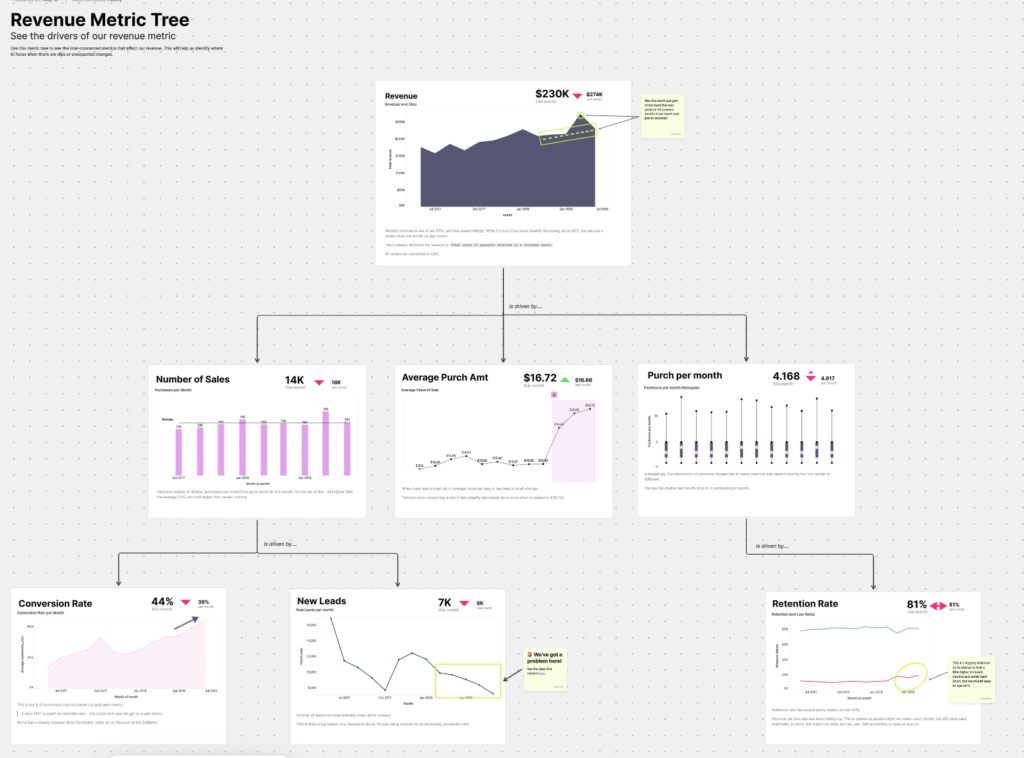In today’s all-or-nothing startup environment, young businesses need to be near-perfect in every aspect to succeed. As startups grow, analytics is the key to success. And yes, data-driven insights can be a game-changer. However, a widespread challenge persists: most startups struggle to integrate analytics seamlessly into their day-to-day business operations. As a founder, you have a unique opportunity to tackle this problem head-on and foster a culture of collaborative analytics within your organization. In this blog post, we’ll explore how you can address this challenge by promoting collaborative analytics, with a focus on culture, tooling, and a practical example involving a marketing team.
Bridging the Gap Between Analytics Operations
Analytics offers the promise of data-informed decision-making, precise targeting, and improved business outcomes. However, the stark reality is that many organizations struggle to bridge the gap between analytics and the daily workings of their business.
Data often remains confined to the realm of data analysts, failing to translate into meaningful actions or insights for the broader team. This gap is where collaborative analytics comes into play. It’s the missing link that turns data insights into actionable strategies that impact the bottom line.
Building a Collaborative Analytics Culture
- Lead by Example: As a startup executive, you must set the standard for collaboration. Demonstrate your commitment to collaborative analytics by actively participating in and encouraging teamwork.
- Clear Communication: Emphasize the importance of clear, open communication. Encourage teams to share insights, ask questions, and provide feedback. Make it known that data-informed decisions are essential.
- Training and Skill Development: Invest in training programs that empower your teams with the skills necessary for collaborative analytics. Ensure that everyone has the knowledge and resources they need to succeed.
- Recognition and Rewards: Recognize and reward individuals and teams who make significant contributions to collaborative analytics efforts. Acknowledgment is a powerful motivator that fuels collaboration.
Equipping Your Teams with the Right Tools
Equip your teams with collaborative analytics tools that facilitate data sharing, visualization, and discussion.

- Standardizing Data Models: Leverage tools like dbt and Dataform to standardize data models for use across every downstream application. These tools ensure that your data remains consistent, reliable, and easily accessible for all teams.
- Creating a Semantic Layer: Empower your business users with a semantic layer using Looker. This tool simplifies complex data structures, making it user-friendly and enabling self-service data exploration. Once the semantic layer is set up, business users can understand and access the data they need without the assistance of data experts. You might need to consider approaching a Looker expert to get set up.
- Interactive Whiteboard BI: Count.co is an interactive whiteboard BI tool that combines the best of both worlds: the creativity of whiteboard tools like Miro and the analytical power of BI tools like Tableau. This tool encourages collaboration and brainstorming, making data discussions more engaging and productive.
- Collaborative SQL Editing: For real-time, collaborative SQL editing, PopSQL is the way to go. It allows data analysts to work together on SQL queries remotely, promoting efficient collaboration and data exploration.
- Data Integration Tools: Invest in tools that streamline data integration from multiple sources, ensuring that your teams can access a comprehensive and reliable dataset.
- Data Governance: Implement data governance policies to ensure data security and compliance, providing confidence to teams in using data effectively.
- Documentation and Knowledge Sharing: Encourage teams to maintain documentation of data sources, methodologies, and insights. Foster a culture of knowledge sharing, enabling insights to benefit the entire organization.
Practical Example: Fostering Collaborative Analytics in the Marketing Team
Let’s consider a practical example involving a marketing team. This team, like many others, wants to make the most of collaborative analytics. Here’s how they can do it:
Step 1: Define Objectives
Start by defining the marketing team’s objectives and KPIs. What are they trying to achieve, and how will they measure success?
Step 2: Data Integration
Implement data integration tools that collect data from various sources, including website analytics, social media platforms, and CRM systems, ensuring access to comprehensive data.
Step 3: Collaborative Analytics Tools
Provide the marketing team with a collaborative analytics platform, as listed above, to create interactive sessions and dashboards and share insights with other departments.

Step 4: Cross-Functional Meetings
Encourage regular cross-functional meetings where the marketing team shares their findings with other departments. For example, they can discuss how a recent marketing campaign affected lead generation and conversion rates with the sales team.
Step 5: Continuous Learning
Support ongoing learning and development by offering training in data analysis and visualization tools, ensuring the marketing team is equipped to leverage collaborative analytics effectively.
By fostering a culture of collaborative analytics, equipping your teams with the right tools, and providing practical examples, you can bridge the gap between data analytics and business operations, empowering your startup to make data-driven decisions that drive growth and success.

